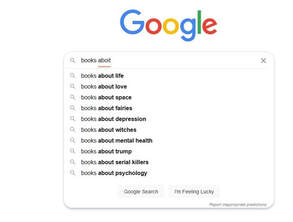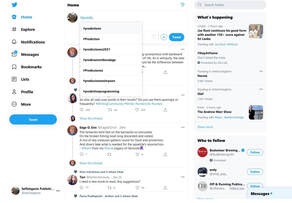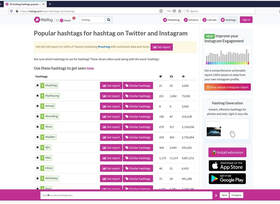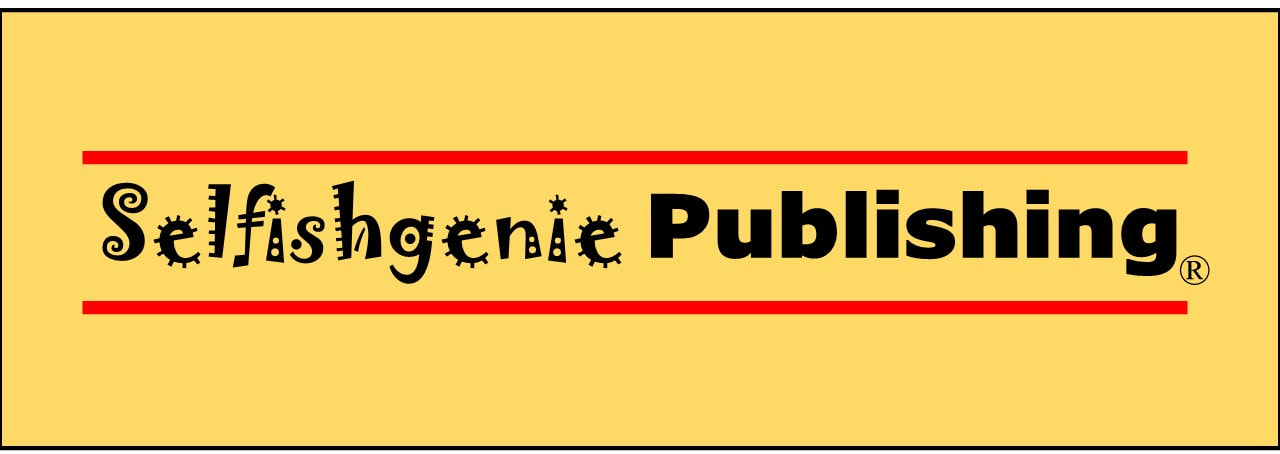Week 15 - Measure For Measure  This week’s blog is split into two parts, but they are closely related. The first is Search Engine Optimisation (SEO) and the second is measuring the success of your marketing. Now, we would be the first to admit that we are not experts in SEO. If you want one of those, all you have to do is search SEO on Twitter and you’ll find about a gazillion people on there who either are, or claim to be, gurus on this subject and they’ll help you – for a price. But in terms of the completeness of this series of blogs, we would be very remiss if we didn’t mention this subject, so here goes. "helping people to find you, or your books, on the internet" What is SEO? It’s all about helping people to find you, or your books, on the internet and social media.  Most blogs about SEO concentrate on promoting a website. Firstly, you may not have a website and secondly, we’re mainly talking about promoting your work through social media. However, people do search for book ideas using search engines such as Google and they also do searches on Amazon and other book selling sites and the same SEO principals apply. People do searches by entering search words and the critical words they use in the query are known as “keywords”. If you are using the same keywords as the person doing the search, there is a high probability they will find you (or your book). But if you aren’t, they won’t. We looked for more information on using keywords on Amazon and this blog was quite useful. According to that article, people looking for books on a particular subject are likely to enter a short description of what they are looking for, rather than single words. This is called a “string” of keywords.  So, in the “keywords” section of your book’s description, you connect together several attributes about the book that someone may look for. For example, if someone is looking for a romantic novel that also involves pirates, they may type in the string “books about romance involving pirates”. I actually typed that into Amazon’s search bar and, guess what, I got several returns of books that involved both pirates and romance.  That approach won’t guarantee that your book is on page one of the search results, but it will certainly be found and it will be in the list somewhere. We found some of the books we published on page one of the results thanks to the keyword strings we have used in their descriptions. Finding the right keyword strings may involve some trial and error. Unlike Google, Amazon’s search bar isn’t so good at predicting commonly used search terms based on what you are typing. We got as far as “Romance in…” when the predictive text gave up and didn’t suggest “including” or “involving”. When we tried “Romance and …” It didn’t carry on predicting past the P in “pirates”. This means that you have no way of knowing if a search terms has been used before. But it is worth spending some time trying out keyword strings that might work with your book and seeing what sort of returns you get. If the keyword strings you enter return books of the type you write, then those are the strings you should be using in your book's description on the retail platforms you use.  Many readers like following a series, so if your book is part of a series, even if it is only the first, make sure you include “…. book series” as one of your keyword strings eg Sci-fi book series. And if you aren’t getting the results you expected after a few weeks (you have to give things time to produce results), you can try some different strings and see how they work. Importantly, though, if your books use those keywords strings on Amazon (and other retail sites), they will also be picked up by Google if someone searches there for your books. So, you can try doing your searches there first and make use of Google’s better predictive search term capabilities. "The use of the right keywords is also a factor when you use SEO for social media." The use of the right keywords is also a factor when you use SEO for social media. As we said at the start of this blog, we aren’t experts in SEO, so we went looking for people who are and we came across this blog, which contains the key messages.  People do search social media using keywords and hashtags, so having the right keywords and hashtags in your posts will help them find you. Every day Twitter tells you what keywords and hashtags are “trending”, so you can join in the conversations if you are interested in those topics. It’s unlikely that your keywords or hashtags will ever trend, but some of those trending topics may be of interest to your target audience so RT’ing the best of the posts will help with your engagement. But for you, it is using the right keywords or hashtags in your posts so when people do searches on social media using those words, they will find your posts amongst the results. There will still be a crowd of course. If you write romance, then #romance is a hashtag that produces a lot of search results. So, you have to use something a bit more targeted, such as #periodromance or #modernromance. There’s still going to be a crowd, but it will be a smaller crowd.  You can also create and use hashtags of your own. If your Tweets are RT’d, those hashtags will become better known over time. Your audience will start to recognise them and they will, perhaps, think of using them for searches. Remember: all hashtags started with someone creating them. Some never catch on, some are still in use years later. Finding hashtags that are already in use is easy enough. When you use the # symbol, predictive text starts to offer you choices of previously used tags. But you won’t know which ones are most popular amongst users. Just because hashtag has been used, it doesn’t mean it is useful.  There are websites that will help you to choose the right hashtag. We use Ritetag, which is free. As well as showing you which hashtags are already being used and how visible they are, if you create your own hashtags you can look on Ritetag a few weeks later and see what sort of visibility you are getting. Just one final word on hashtags. Social media users comment on how distracting they are, so the experts advise never using more than three in any post and placing them at the end of the message, rather than within the main body of the text. I was reminded of this just a few moments ago when I was on Twitter and came across a Tweet that was mainly made up of hashtags and immediately scrolled past it. "Knowing how your hashtags are working is useful information" Knowing how your hashtags are working is useful information. If they aren’t working, you need to find a way of promoting them or you need to change them.  Measurement is usually regarded as the boring part of marketing. Besides, there’s only one measurement that you are interested in – book sales. But measurement is pretty important when it comes to creating a successful social media marketing campaign. If you are going to do this well, you are going to start your campaign weeks or even months in advance of your book’s publication. That is a long time to wait to find out that your social media campaign isn’t working. So, you need to measure other things along the way to tell you if you are on the right track.  Think about a long car journey. One way to measure your journey’s progress is to read the road signs and see how far you are from your destination and, if your destination isn’t shown on the sign, how far you are from the next town along your route (known by navigators as a “waypoint”). If you are using a satnav this information is constantly on display, along with an estimated remaining journey time – so you are quite used to doing this sort of measurement. Unfortunately, there is no equivalent of a satnav for your social media marketing so you will have to set up your own measurement system and your own “waypoints”. If you are on the right track – great. But if you aren’t, it isn’t too late to re-think your campaign and try a different approach. In your car journey you might change your route to avoid traffic congestion at some road works and this is no different. Sometimes it only needs a slight tweak to the wording of a message to produce better results.  I’ll give you a real-life example. As part of our generic marketing (rather than targeting a specific title), we Tweet a different “Book of the Day” each day. For a long time, this wasn’t producing much in the way of interest – hardly any re-tweets (RTs) or “likes” and even fewer click throughs to Amazon. These are three of our measurements, used to assess if we are catching Twitter users’ interest. Then one of our colleagues mentioned how hard it was to read some Twitter posts on her phone. The text was so tiny that it was unreadable. She showed me the Tweet and I had to agree with her. I suggested she expand the image, but she said she didn’t have time to mess about like that. "The text was so tiny that it was unreadable" The penny dropped with a very loud clang. That was what was wrong with our images. People use social media a lot when they’re on the move: trains, buses etc so a lot of our Tweets will be viewed on phones and the images we were using weren’t readable on a small screen. So, we changed the format of the Tweets. We made the wording bolder and more eye catching and, instead of using our own image, we let the link connect to Amazon, which then showed the cover image within the Tweet but made it more prominent.  The results were almost instantaneous, with more likes and RTs being recorded. But, thanks to Twitter’s analytics we could see we were also getting more click-throughs to the Amazon sales pages. And then we saw that sales were going up. But if we hadn’t been measuring likes and RTs in the first place, we wouldn’t even have known we had a problem. We use different measurements to establish what levels of engagement we get on this website and we see how different messages on social media result in traffic arriving here. If you clicked on a link on Twitter to read this blog, you will appear in our measurements. Not by name of course, that would breach data protection laws, but you are there in “number of clicks” on Twitter analytics and we also measure the number of visitors we get to this website.  So, measurement may be boring, but it can make the difference between a lot of wasted time and a successful marketing campaign. There is one word of warning, however. You don’t fatten a pig by weighing it (apologies to vegans, Jews and Muslims, but its just a metaphor). In other words, there is such a thing as too much measurement. Business people talk about the “vital few”. These are the critical measurements that tell you how you are performing. It is very easy to let the vital few become the irrelevant many. You can use some measurements for a quite a limited period of time. For example, the only time you are really interested in knowing how many followers you have on Twitter is when you start to establish your social media presence. Once you have a reasonable level of followers all you need to do is check back from time to time to make sure you haven’t lost too many. "work out what you need to measure and when" So, work out what you need to measure and when. At other times, you can let those measurements drift down the priority list and promote some that are becoming more relevant. Measurement is supposed to inform strategy, so if you don't measure or you measure the wrong things, you can't know if you have the right strategy.  This brings us towards the end of this series of blogs. We have discussed the 6Ps of the marketing mix:
We have also suggested a few things that you don’t do, such as blasting out generic Tweets in the hope of catching someone’s eye. And, especially, not paying someone else to do that for you. Hopefully you will now feel more comfortable about trying things for yourself. You will make mistakes – everybody does. Just make sure you learn from them and don’t repeat them. Future blogs are going to be on a wide range of publishing topics and we’ll be hosting guest blogs and posting book reviews (not of the books we publish). So do keep checking back to see what we are doing. As it happens, next week we're posting reviews of 2 books by the same author, each of which is very different in content. And don’t forget to check out our "Books" tab to find out what books we offer. If you have enjoyed this blog and found it informative, make sure you don't miss an edition by signing up for our newsletter. Just click the button.
0 Comments
Leave a Reply. |
AuthorThis blog is compiled and curated by the Selfishgenie publishing team. Archives
June 2025
|

 RSS Feed
RSS Feed